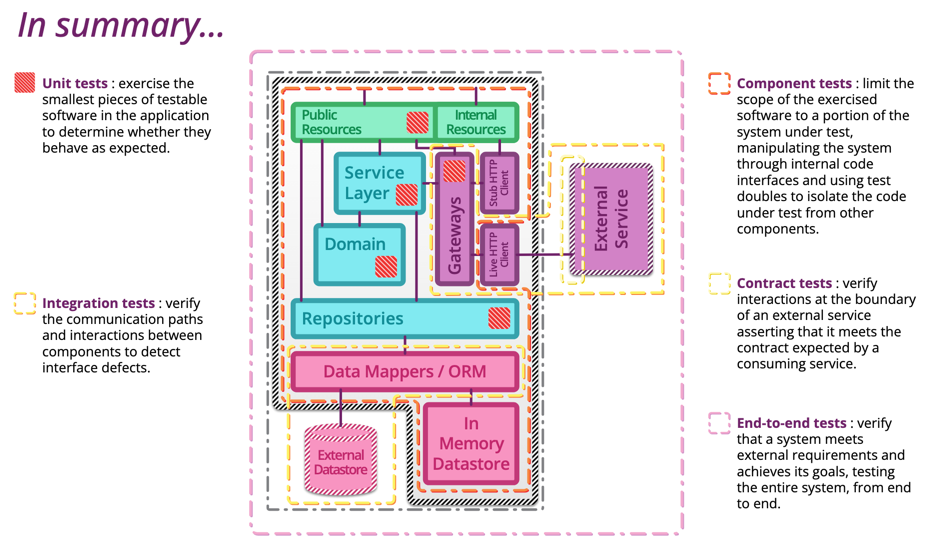Summary
测试策略

System architecture is based on microservices, testing requires a structured approach to ensure reliability, maintainability, and efficiency. Traditional monolithic testing strategies do not fully address the complexities of microservices, such as inter-service communication, independent deployments, and distributed data consistency.
The testing structure is organized according to the testing pyramid, from bottom to top:
- Unit Test – Tests the smallest testable piece of software in the application to verify it behaves as expected, Validate individual components in isolation.
- Integration Test – Tests integrations with data stores and external components (Kafka integration), Verify communication between multiple services
- Component Test – In a microservice architecture, the components are the services themselves. Test the behavior of a service in isolation, including its dependencies and side effects.
- Contract Test - Where all the consumer/provider contract lives. Ensure that service interactions conform to predefined contracts.
This structured approach minimizes the reliance on expensive and brittle end-to-end tests while maximizing confidence through more focused and efficient testing at lower levels.
Guide
implement the microservice test strategy as follows:
- Prioritize unit and component tests to catch issues early and ensure individual service reliability.
- Use contract tests to validate interactions between services and enforce API expectations, using Pact
- Leverage integration tests for key workflows that span multiple services.
- Ensure automation and CI/CD integration for all test levels to maintain rapid feedback cycles.
Consequences
- Faster feedback loops due to emphasis on lower-level tests.
- Enhanced service reliability through contract validation and integration testing.
- Reduced maintenance burden as brittle UI tests are minimized.
- Adoption of a consistent testing approach aligned with industry best practices.